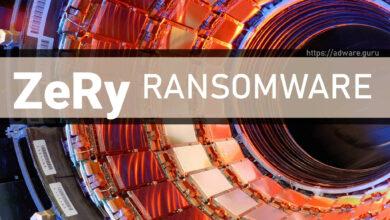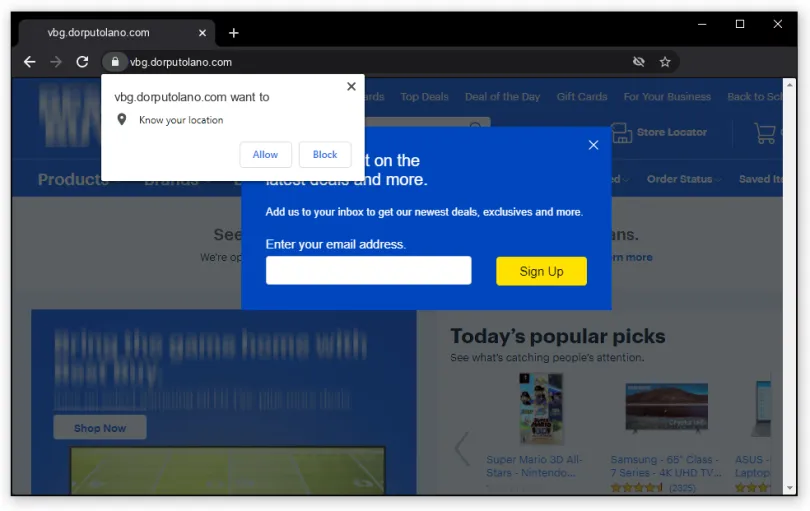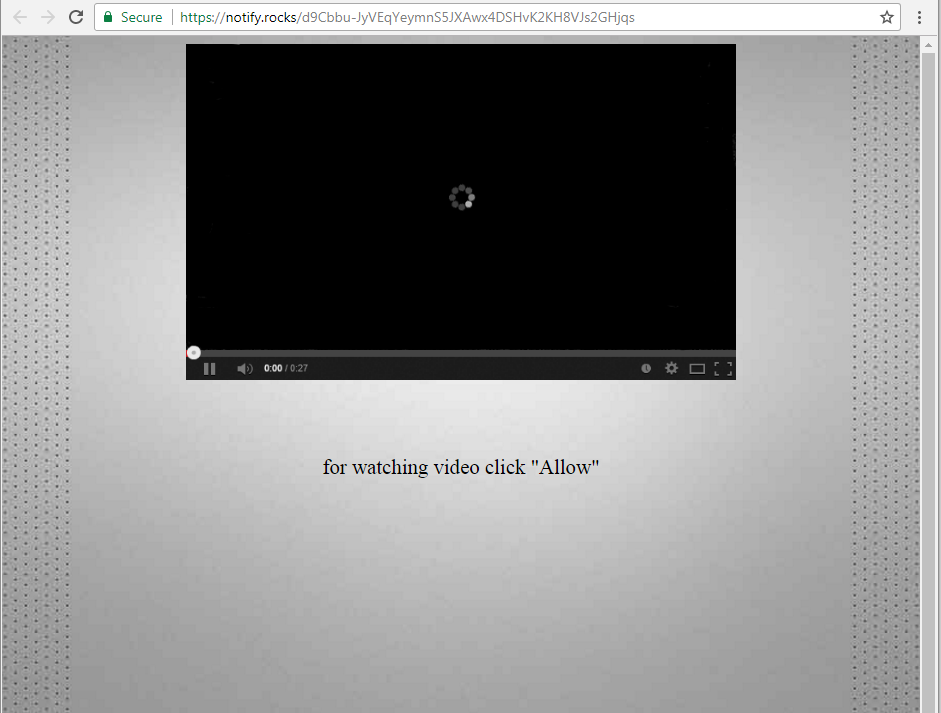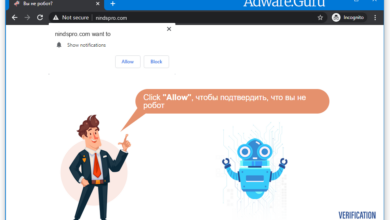Azhi Virus Removal Guide (+Decrypt .azhi files)
Azhi Virus Ransomware
Azhi is a harmful software application working as common ransomware. Michael Gillespie, the widely known malware researcher, first found this new name in the DJVU ransomware family.
Azhi was created for the sole purpose to encrypt all popular file types. Rationally, as soon as the file encryption is successfully accomplished, the users are not able to get access to them. Azhi ransomware includes its own “.azhi” to all the encrypted data. For example, the file “price_list.xls”, once modified by Azhi, will be entitled as “price_list.xls.azhi”. As soon as the encryption is achieved, Azhi puts its own special text document (_readme.txt) into all the folders that save the encrypted files.
The message mentioned by _readme.txt requesting for the random os extremely comparable to the notices offered by other ransomware dangers belonging to the DJVU family. The caution basically indicates that the data has been secured and the only service to get access to it is to use a distinct standalone key. Regretfully, this statement is absolutely true.
The method to secure the files used by Azhi is not totally researched. However, there is no doubt that each computer system owner might be provided an unique decryption key, which is definitely distinct. It is extremely hard to recover the information without the appropriate type in location.
“Don’t worry, you can return all your files!”, from _readme.txt message:
One more peculiarity of the Azhi infection is that the users are unable to get access to the key. The decrypting key is hosted on a special server under the total control by the criminals who have actually introduced the Azhi virus into the web. In order to get the key and restore the important data, the users are told to contact the frauds through email or by telegram and to pay the ransom in the amount of $980.
The message likewise says that individuals ought to contact the Azhi authors within 72 hours upon the minute of the information encryption. The alert shows that by doing so individuals will get a 50% discount, therefore, the ransom amount falls to $490.
Azhi encrypted your data, nevertheless, it might not be the only threat on your computer. Plus, the ransomware may be hidden deep in the system. To discover and delete the threat completely, we recommend you to describe the aid of GridinSoft Anti-Malware app.
Download GridinSoft Anti-Malware
GridinSoft Anti-Malware Review, How to get free trial?, EULA, and Privacy Policy.
No matter what the quantity of the ransom is, we highly encourage that you do not pay the ransom. There is no warranty that these online scoundrels will keep their promises, so they may not care at all what the victims feel about the encryption, even when the amount of the ransom is gotten into their accounts. Thus, paying ransom frequently does not lead to an effective healing. So, the users might simply lose their money for nothing.
Similarly, we urge you not to call the scams as they advise. Do not move loan into their wallets. There are no applications that could split the Azhi virus or bring back the data for free. Therefore, the only correct choice is to bring back the data from possible backups (if readily available).
Virus Summary
| Name | Azhi Ransomware |
| File Extension | azhi |
| Type | Ransomware |
| Family | DJVU |
| Short Description | The ransomware encrypts all the data stored on your system and requires a ransom to be paid on your part supposedly to recover your important files. |
| Symptoms | File encryption by the ransomware is performed by means of the AES-256 algorithm (CFB mode) encryption algorithm. Once the encryption is completed, the ransomware adds its special .azhi extension to all the files modified by it. |
| Distribution Method | Adware bundles and software cracks |
| Similar Infections | Lokas, Besub, Nusar |
| Azhi Removal Tool | GridinSoft Anti-Malware |
| Azhi Decryption Tool | Emsisoft Djvu Decryptor |
Do not forget that the Web is now filled with infections comparable to the Azhi virus. For instance, this specific danger is basically similar to Brusaf and other ransomware-type infections. These harmful utilities have been developed in order to encrypt the important data and reveal the need for the users to pay the ransom. All these infections utilize the similar algorithm to produce the specific key for effective data decryption.
Unless the Azhi ransomware is still under the development procedure or has got some hidden bugs, it is not possible to bring back the data by hand. Thus, the only working service to avoid the loss of your crucial data is to routinely keep up-to-date backups of all your essential files.
Another important piece of guidance is to store the backups on unique storage not linked to your main device. For example, you might keep it on the USB Flash Drive, or some external drive, or by using the cloud data storage services. Keeping the backups on your system drive is really risky, because the backup may also be encrypted by the Azhi ransomware.
Leaks for the Azhi ransomware attack.
Azhi uses many courses to infiltrate the susceptible computer systems. It is not particular what specific approach was used in your case, however, the invasion may occur via the following channels:
- bundling with third-party programs, generally free software;
- spam e-mails from the unknown senders;
- websites supplying complimentary hosting;
- P2P (peer-to-peer) torrent software.
There are times when the Azhi ransomware may disguise itself as some genuine application, for example, through the misleading alerts demanding installation of some software application update. This is the most common trick utilized by the frauds to inject the Azhi ransomware files into the system. In this manner users partly participate in its setup, without plainly comprehending the danger.
In addition, the frauds might send out unsolicited spam e-mail with tricky notifies encouraging individuals to open suspicious attachments or click some download links, for instance, those encouraging individuals to open specific pictures, text files, tax files and other info.
No doubt, opening these files or clicking on the harmful links might essentially harm the system. Fake Adobe Flash Player upgrade alerts may cause the Azhi ransomware infiltration. Likewise, downloading the cracked software might additionally include the ransomware installer. The last but not the least, installation of Azhi might take place through some Trojan horses that might be set up stealthily into the system and without the user’s direct approval and even authorization.
Preventing the Azhi ransom virus attack.
Of course, there is no outright guarantee that your computer will be constantly devoid of any malware attacks, however, we want to share some beneficial pointers with you to make it safer. Ensure to pay extremely attention while browsing the web and especially while getting cost-free programs. Do not open any suspicious e-mail accessories, especially if the sender is not understood to you.
Do not forget that specific freeware installer may likewise consist of some other extra apps in the package. These extra applications may be very destructive. It is of utmost importance to keep your anti-virus software application and your operating system in basic to be always correctly updated.
It is rather sensible that downloading cracked apps is illegal, nevertheless, in addition, such unauthorized apps usage may also bring severe damage to your computer. Hence, do not download any broken programs. Plus, the fact that your existing anti-virus did not protect the system from the Azhi ransomware is a good factor for you to reevaluate your options and change to another program that can render the safeguarding functions on a much better level.
Below please find the quotation from the Azhi text file:
ATTENTION! Don't worry, you can return all your files! All your files like photos, databases, documents and other important are encrypted with strongest encryption and unique key. The only method of recovering files is to purchase decrypt tool and unique key for you. This software will decrypt all your encrypted files. What guarantees you have? You can send one of your encrypted file from your PC and we decrypt it for free. But we can decrypt only 1 file for free. File must not contain valuable information. You can get and look video overview decrypt tool: https://we.tl/t-2P5WrE5b9f Price of private key and decrypt software is $980. Discount 50% available if you contact us first 72 hours, that's price for you is $490. Please note that you'll never restore your data without payment. Check your e-mail "Spam" or "Junk" folder if you don't get answer more than 6 hours. To get this software you need write on our e-mail: restorealldata@firemail.cc Reserve e-mail address to contact us: gorentos@bitmessage.ch Our Telegram account: @datarestore
Screenshot of files with “.azhi” extension added by the ransomware:”
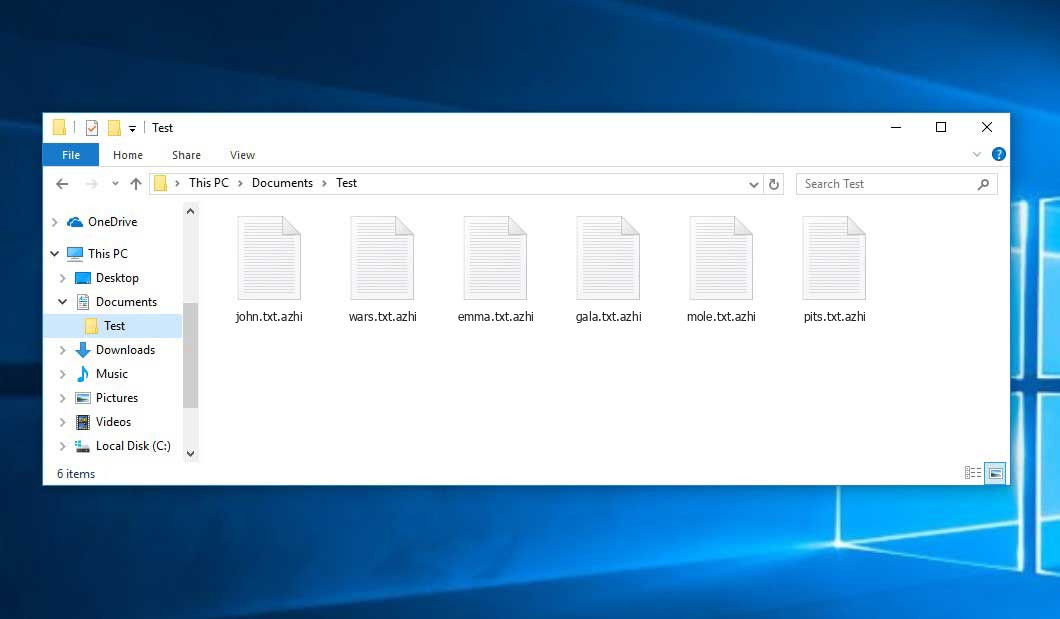
Use GridinSoft Anti-Malware to remove Azhi ransomware from your computer
1.Download GridinSoft Anti-Malware.
You can download GridinSoft Anti-Malware by clicking the button below:
2. Double-click on the setup file.
When setup file has finished downloading, double-click on the setup-antimalware-ag.exe file to install GridinSoft Anti-Malware on your computer.

An User Account Control asking you about to allow GridinSoft Anti-Malware to make changes to your device. So, you should click “Yes” to continue with the installation.

3. Press Install button for run GridinSoft Anti-Malware.
3.Once installed, GridinSoft Anti-Malware will automatically run.
4. Wait for the GridinSoft Anti-Malware scan to complete.
GridinSoft Anti-Malware will automatically start scanning your computer for Win Speedup 2018 and other malicious programs. This process can take a 20-30 minutes, so we suggest you periodically check on the status of the scan process.

5. Click on “Clean Now”.
When the scan has completed, you will see the list of infections that GridinSoft Anti-Malware has detected. To remove them click on the “Clean Now” button in right corner.

Use Emsisoft Decryptor for restore azhi files
You can get Emsisoft Decryptor by clicking the button below:
- Run the decryptor as an administrator. The license terms will show up, which you have to agree to by clicking the “Yes” button.
- Once the license terms are accepted, the primary decryptor user interface opens.
- By default, the decryptor will pre-populate the locations to decrypt with the currently connected drives and network drives. Additional locations can be added using the Add” button.
- Decryptors typically offer various options depending on the particular malware family. The available options are located in the Options tab and can be enabled or disabled there. You can find a detailed list of the available Options below.
- After you have added all the locations you want to decrypt to the list, click the “Decrypt” button to start the decryption process. The screen will switch to a status view, informing you about the current process and decryption status of your files
- The decryptor will inform you once the decryption process is finished. If you require the report for your personal records, you can save it by clicking the “Save log” button. You can also copy it straight to your clipboard to paste it into emails or forum posts if you are asked to.




